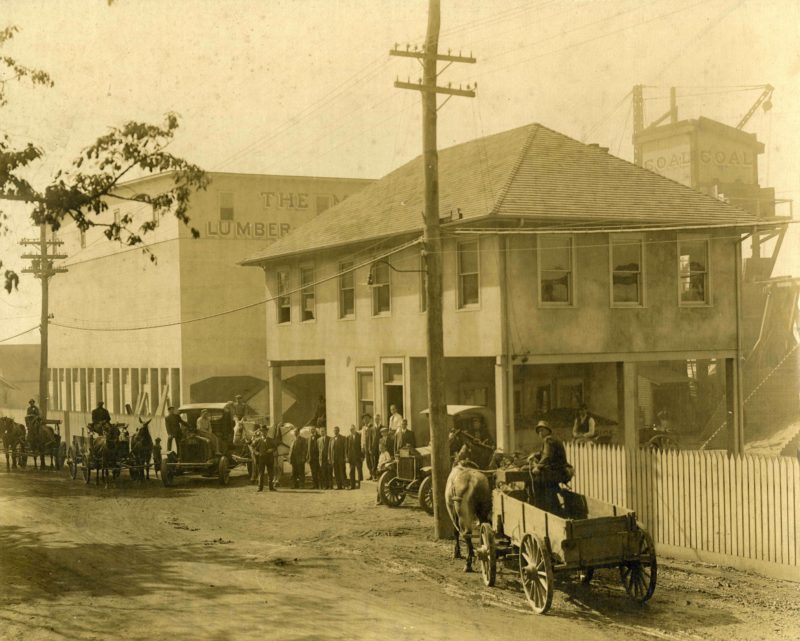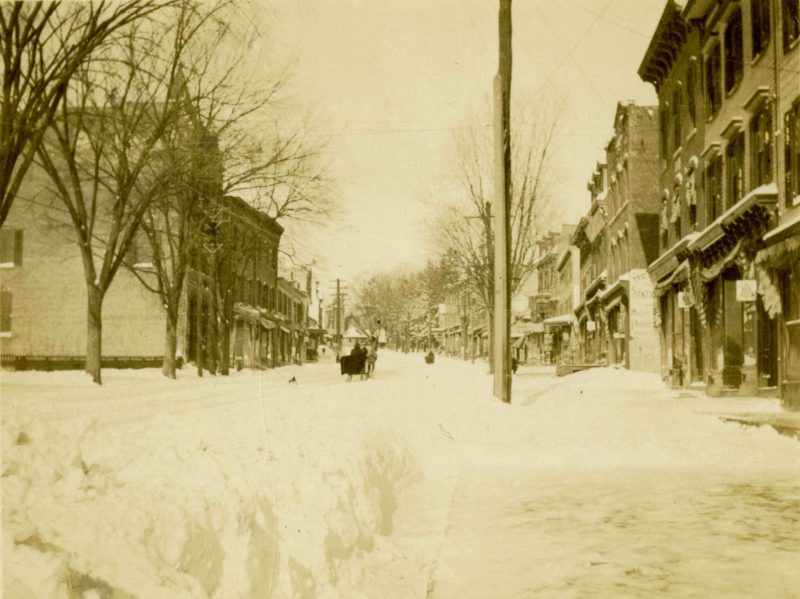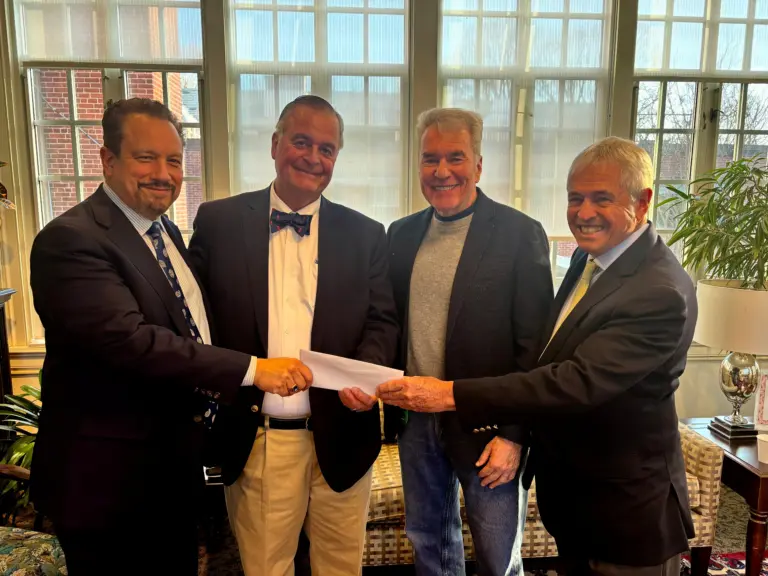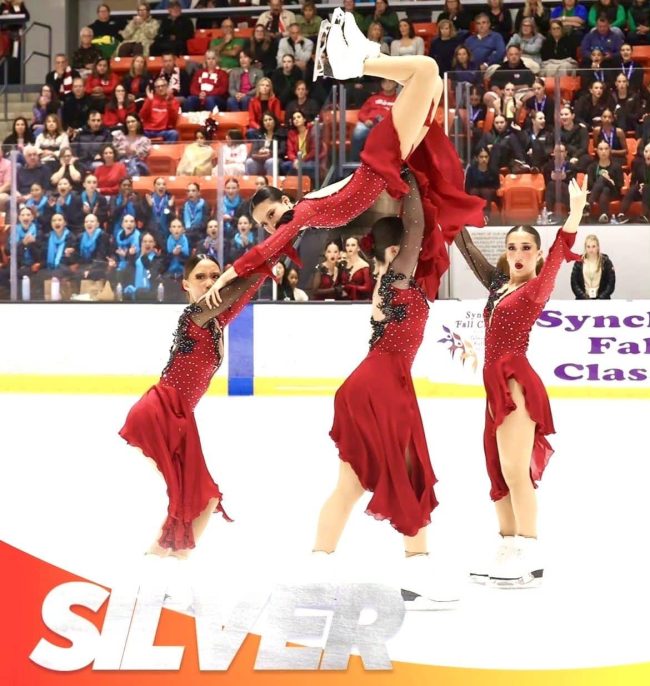Celebrating 50 Years of the Oral History Project – Greenwich in the Early 1900s

By Mary A. Jacobson
“I don’t know how we lived through that. That’s the God’s truth. The people today couldn’t do it.” So spoke Frances Sprague who, with husband William Sprague, were Irish immigrants to Greenwich in the 1890s. They were interviewed in 1976 by Oral History Project volunteer Betsy Cullen. Well into their eighties by then, their memories of life in the early 1900s in Greenwich were vivid. Often finishing each other’s sentences, they were never at a loss for words describing their early years on Steamboat Road.
Harsh winters played a major role in many of their recollections. The year 1917 was a particularly severe one. “The Showboat Motel (now the Delamar) … that’s where the coal yard was. Barges of coal would come in there… but they were froze out by Captain’s Island. Three barges of coal… So, they had to get sleds and horses, and they went out there (on the ice) and brought some of the coal in.” The depth of the ice in the Sound at that time “was twenty-seven inches of saltwater ice.”
The Sprague marital home on Steamboat Road was situated on stilts. “Our house, it was moved (around 1890). That little house is an old yacht club. It was moved from Tweed Island…You know the porches they have on yacht clubs? Well, they was all the way around…The house was moved on a barge… Patsy the clam man, he seen it moved.”
Steamboat Road was no stranger to flooding. “At very high tide the water would come up…We were right on the water… You could sit on the porch and watch the fish jump there.” One of eight children, Frances had spent her early years in another house on Steamboat Road. She remembered its cold, blustery winters. “We had no heat. Built our own fires. My father used to saw wood and saw wood, and he had the whole place full of it. Wood burning all the time… We got all the heat from the kitchen. No heat up in the bedrooms…The water we would bring up at night would be frozen in the morning… You couldn’t see through the windows for three months of the year. Windows all froze up.”
Lights? Frances recounted: “We had no lights for a long time until we finally got them in.” Toilet facilities? “Outhouse…You’d go out in the yard, and the wind would whistle up.” According to her, “And we were brought up that way. We always had it that way.” William grew up in comparative comfort on Lewis Street. “We had heat and running water. We had a bathroom, and we had a lavatory downstairs. We had everything in the house.”
Frances and William met at Greenwich Hospital when it fronted on Milbank Avenue. He was an apprentice painter and she had been working in the kitchen from the time she was twelve. William explained, “Yes. I met her. She had a basket of eggs, and I was looking for a broom. I bumped into her. I almost broke the eggs.”
Travel was limited. “There was no cars then hardly. You had to be really wealthy to have a car… And at the station in the morning, it was all coaches and carriages.” One coach they admired was owned by Robert Bruce (later of Bruce Park and the Bruce Museum). “Poppy Bruce they called him.” It was a “tally ho” (a four-in-hand coach) with a horn “like Tarzan used to have.” The driver “wore a big high hat and a buttoned uniform all the way down… I think their coat was purple with silver buttons and the hat would be the same with the silver band and the little bells on the hat…That coach was cleaned from stem to stern. . . like patent leather.”
The shops on Greenwich Avenue in the early days were far from the high-end ones that are located there now. “The wealthy people didn’t buy their stuff in Greenwich then. They had it sent from New York…The stores here had to depend on the middle class of people and the poor people.” At the lower end of the Avenue, their memories included Klumpp’s Bakery, Knapp & Studwell’s grocery, a tavern, a lunch wagon, the shoemaker, and Quinn’s grocery, among others. Near Grigg Street, “There was a boarding house that Mrs. Carmichael ran. Must have been twenty rooms…The town was starting to get built up” and workers needed a place to stay. The A & P and Breslow’s Liquor Store led to the Post Office (now Restoration Hardware). “That was a hole in the ground… That was a regular swamp there where that Post Office is.” The land where Betteridge’s now stands was a baseball field.
William was not nostalgic for days gone by. “You can have them good old times. I didn’t have a nickel in my pocket. A loaf of bread could be bought for a nickel then. Couldn’t buy the loaf of bread…This is heaven compared to what we had when we were married… When we look back, we often wonder how we done it.”
The interview “Greenwich in the Early 1900s” may be read in its entirety or checked out at Greenwich Library and is available for purchase at the OHP office. The OHP is sponsored by Friends of Greenwich Library. Visit the website at glohistory.org. Our narrators’ recollections are personal and have not been subjected to factual scrutiny. Mary Jacobson serves as blog editor.





